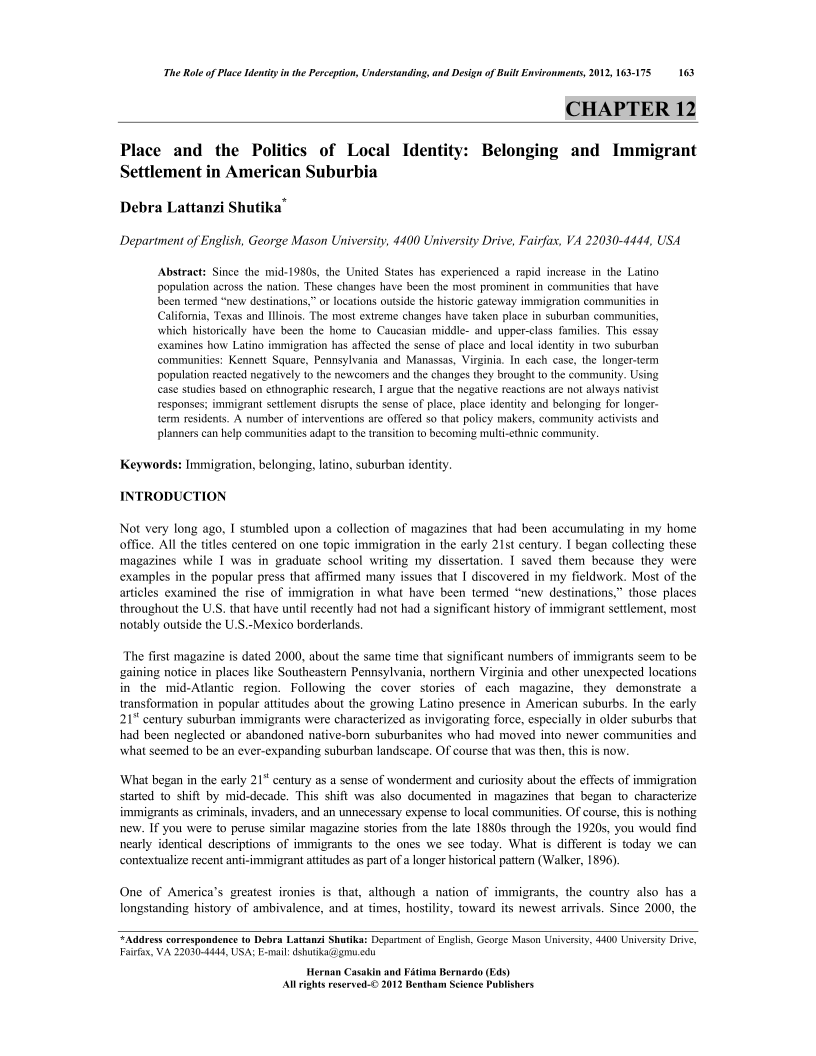Place and the Politics of Local Identity: Belonging and Immigrant Settlement in American Suburbia

- By Debra Lattanzi Shutika1
-
View Affiliations Hide Affiliations1 Department of English, George Mason University, 4400 University Drive, Fairfax, VA 22030-4444, USA
- Source: The Role of Place Identity in the Perception, Understanding, and Design of Built Environments , pp 163-175
- Publication Date: July 2012
- Language: English
Place and the Politics of Local Identity: Belonging and Immigrant Settlement in American Suburbia, Page 1 of 1
< Previous page | Next page > /docserver/preview/fulltext/9781608054138/chapter-12-1.gif
Since the mid-1980s, the United States has experienced a rapid increase in the Latino population across the nation. These changes have been the most prominent in communities that have been termed "new destinations," or locations outside the historic gateway immigration communities in California, Texas and Illinois. The most extreme changes have taken place in suburban communities, which historically have been the home to Caucasian middle- and upper-class families. This essay examines how Latino immigration has affected the sense of place and local identity in two suburban communities: Kennett Square, Pennsylvania and Manassas, Virginia. In each case, the longer-term population reacted negatively to the newcomers and the changes they brought to the community. Using case studies based on ethnographic research, I argue that the negative reactions are not always nativist responses; immigrant settlement disrupts the sense of place, place identity and belonging for longerterm residents. A number of interventions are offered so that policy makers, community activists and planners can help communities adapt to the transition to becoming multi-ethnic community.
-
From This Site
/content/books/9781608054138.chapter-12dcterms_subject,pub_keyword-contentType:Journal -contentType:Figure -contentType:Table -contentType:SupplementaryData105

